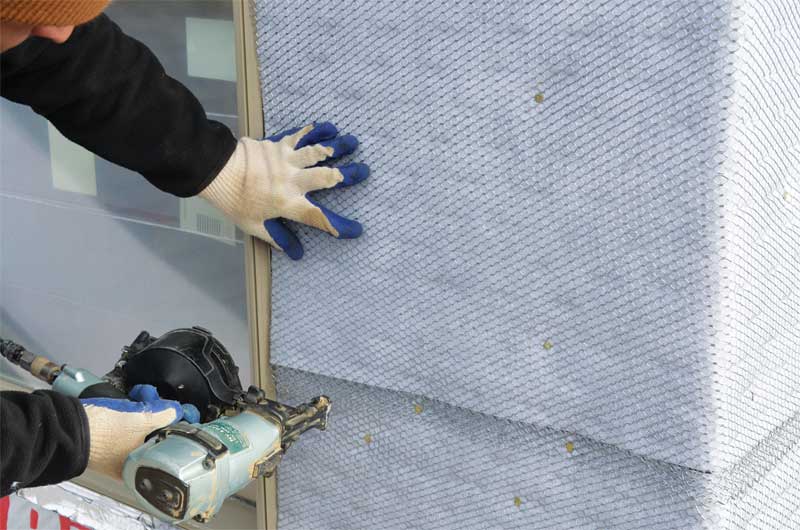Best practices for masonry wall systems and insulation

Anchoring systems
Finally, anchoring devices must be specified to tie the masonry veneer to the structural backup. This is a critical component of a masonry wall’s stability and longevity, yet many designers frequently leave the choice of wall anchor to the contractors. These authors strongly recommend designers specify anchors with the same care they use on the rest of the wall.
In cavity walls, the anchors must be properly sized to span the cavity, as well as be corrosion-resistant. As cavities get larger to accommodate thicker ci, it becomes more important to properly engineer the anchors for shear strength. Stress-distributing air/water sealing washers are important to allow the anchors to be pulled tightly against the ci layer, which, as mentioned, effectively seals each anchor penetration against air and water leaks. For adhered masonry walls, nails or staples—typically used when lath is attached directly to the structural wall—may not be strong enough when using ci, and must also be properly engineered. With this masonry type, the fasteners support a large part of the veneer’s weight, so they must be able to resist both shear and pulling forces to function successfully.
Conclusion
Economic pressures, a strong desire for improved sustainability, and increasingly stringent energy requirements are forcing designers to find new ways to improve wall performance while making the architect and contractor’s jobs faster and less risky. The labour shortage is also driving the industry to find more efficient building techniques to meet growing commercial construction demand.
Specifying and installing pre-tested and warrantied complete wall systems addresses all these issues. These wall systems eliminate the need for designers to evaluate system testing and compatibility among multiple wall components. They slash design time, reduce designer and contractor risk, save contractors money by cutting installation time, and help stakeholders create beautiful, long-lasting, and sustainable buildings.
Herbert Slone, RA, is Owens Corning’s chief architect and senior manager of commercial building systems. As a registered architect with more than 45 years of experience in construction, he provides leadership in building envelope systemization. Besides his role as an architect, he has also worked as a building official and university instructor, authored articles, and chaired industry committees, and was appointed by Ohio’s Governor to the Ohio Board of Building Standards. Slone can be reached at herbert.slone@owenscorning.com.
Art Fox is marketing and communications director for Mortar Net Solutions. He ran several construction companies in the 1970s before becoming Mortar Net’s first COO, and has been involved in helping grow the company since its founding. Fox has also taught business writing and communications at Depaul University since 2003. He can be reached at afox@mortarnet.com.


